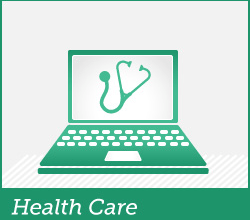If you are responsible for leading the development and execution of a healthcare marketing strategy for 2014, you should know how to allocate resources to the channels that will provide the most ROI.
If you are responsible for leading the development and execution of a healthcare marketing strategy for 2014, you should know how to allocate resources to the channels that will provide the most ROI.
Sure, you could just focus your resources on the same channels as last year, but looking backwards can be a trap. Your boss isn’t looking for you to make an exact copy of last year’s strategy, even if it worked. As the leader of your company’s marketing initiatives, you’re expected to do more than keep the status quo; you’re expected to implement strategies so the company can do better. You need to understand current market dynamics and see around the corner so that the strategies you implement will be effective for the entirety of the next year.
In the past year we have seen an increasing dependence on digital platforms for health information, decision-making, and collaboration. Digital is the way we connect and learn today. If you want to have an influence on the consumer’s decision-making process, you have to be where decisions are being made. If digital is big now, it’s only going to become a more important channel throughout the next year. This means you need to plan to have even more of a focus on digital for your healthcare marketing strategy if you want to keep up. You need to be forward thinking. You simply can’t afford to miss out on the opportunity digital provides when time and money are scarce.
With big changes to the healthcare ecosystem coming up, companies will be pressed to find the most economical ways to connect with patients. The industry is changing fast, so don’t get stuck being complacent. If you don’t have a strong digital strategy, where do you think you will be in six months when your boss asks why marketing isn’t driving more sales?
1. Americans are using the internet when they have health concerns.
- 1 in 3 American adults have gone online to figure out a medical condition
- 72% of internet users say they looked online for health information within the past year
(Source: Pew Internet)
2. Healthcare marketing today needs both offline and online strategies.
- 84% of patients use both online and offline sources for research
- 77% of patients use search engines
- 76% of patients use hospital sites
- 52% of patients health information sites
(Source: Google Think)
3. Offline shouldn’t be ignored, but it’s far less important than digital mediums. This should be factored in when budgeting and planning healthcare marketing strategies. Resist the temptation to rely on old, traditional tactics that are less effective just because “that’s the way we’ve always done it.”
- 32% of patients use TV for research
- 20% of patients use magazines for research
- 18% of patients use newspapers for research
(Source: Google Think)
4. Search will continue to play an important role in the decision-making process. Healthcare marketing execs need to develop a strategy so the company and its products and services can be found using search. This means you need a strong website, a social and content strategy, and SEO.
- 77% of online health seekers say they began their last session at a search engine such as Google, Bing, or Yahoo
- Another 13% say they began at a site that specializes in health information, like WebMD
- The most commonly-researched topics are specific diseases or conditions; treatments or procedures; and doctors or other health professionals
(Source: Pew Internet)
5. Consumers are becoming more involved in managing their own health, especially using health tracking. Healthcare marketing needs to address proactive patients who are engaged in actively monitoring and promoting their health.
- 7 in 10 U.S. adults have tracked a health indicator for themselves or for someone else
- Of those, 34% share their health tracking records or notes with another person or group
(Source: Pew Internet)
6. Consumers are increasingly using mobile to access information. Websites absolutely must be mobile friendly and able to be viewed well in multiple kinds of devices.
- Of patients who found hospitals on their mobile devices, 44% scheduled an appointment
- Roughly 1/3 of patients used tablets or mobile devices on a daily basis for research and/or to book appointments
(Source: Google Think)
7. Mobile is used everywhere. Healthcare marketers need to take this into consideration when creating websites and digital content. Pay careful attention to where the patient is in the decision-making process, and serve the appropriate content that serves that need.
- 61% while at home
- 27% at work
- 23% while visiting friends or family at home
- 20% while out of town
- 16% while in a doctor’s office
(Source: Google Think)
8. Brand is important to prospective patients.
- Reputation of facility 94%
- Accepts healthcare plan 90%
- Recommended by physician 86%
- Uses latest technology 85%
- Recommended by friends and family 51%
(Source: Google Think)
9. For patients who booked appointments, digital content is key to decision-making.
- 77% of patients used search prior to booking an appointment
- 83% used hospital sites
- 54% used health insurance company sites
- 50% used health information sites
- 26% used consumer generated reviews
(Source: Google Think)
10. Online video is important.
1 in 8 patients watched an online video on:
- Hospital sites 42%
- Health insurance information sites 31%
- Health information sites 30%
- YouTube 29%
- Health insurance company sites 20%
53% of patients who didn’t watch hospital videos were unaware they existed.
(Source: Google Think)







